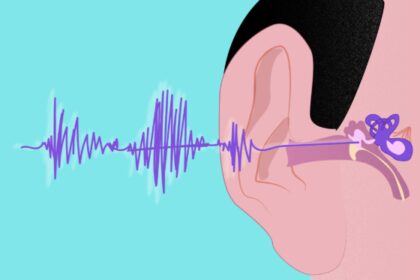In the captivating tapestry of history, the Vikings stand tall as the ultimate adventurers—masters of the open seas, conquerors of new realms, and architects of legends. Yet, amid the tales of their conquests and bravado, a lesser-known narrative unfolds—one of survival and resilience against the formidable challenges of their maritime lifestyles.
Picture this: Vikings embarking on journeys that spanned not mere days, but months and even years, navigating the unpredictable waters. How did they endure the relentless waves and unforgiving tides?
The answer lies in a creation that we now associate with festive indulgence—the fruitcake. But don’t be fooled; this was no ordinary fruitcake. It was a powerhouse of sustenance, meticulously crafted to fuel both body and mind, ensuring these seafaring warriors didn’t just survive, but thrived on their relentless quests.
Join us as we peel back the layers of Viking history to uncover the truth about their ingenious “fruit cake.” In a world where modern adventurers seek energy drinks and protein bars, the Vikings had cracked the code centuries ago, crafting a nutrient-dense marvel that sustained them through the most grueling of maritime challenges.
Let’s delve into their culinary legacy, dissect the ingredients that fueled their feats, and shed light on how this ancient creation continues to whisper tales of their indomitable spirit in every bite.
History Of The Vikings
Before we delve into the remarkable properties of the Viking “fruit cake,” let’s rewind the clock and revisit the fascinating history of these seafaring adventurers. The Vikings, hailing from the rugged landscapes of Scandinavia, were more than just pillagers and warriors.
They were master navigators who dared to explore uncharted waters, charting new courses, and expanding the horizons of the known world. With sleek ships and unyielding determination, they sailed across vast oceans, navigating through treacherous waters, discovering new lands, and leaving their indomitable mark on history.
From the Scandinavian fjords to the distant shores of North America, the Vikings etched their legacy on a canvas that stretched beyond geographical boundaries. Yet, it wasn’t just their conquests that defined their identity. The Vikings were explorers and traders, exchanging goods, cultures, and ideas with lands as far-flung as Constantinople in the East and Greenland in the West.
But the Viking Age wasn’t all about conquests and exploration. It was also an era of extensive trade, cultural exchange, and, notably, culinary exploration. As these explorers journeyed to far-flung corners of the world, they encountered a plethora of ingredients and techniques. Among these, the concept of nutrient-dense sustenance became paramount for their arduous maritime adventures.
The Vikings “Fruit Cake” and Its Benefits
Now, let’s dive into the heart of the matter—the Viking “fruit cake.” Before visions of candied fruit and holiday treats cloud your mind, understand that this was no ordinary fruitcake. While today’s fruitcakes are often relegated to the realm of holiday indulgence, the Viking “fruit cake” was a sustenance powerhouse that sustained these seafaring warriors during their grueling expeditions.
Far from the overly sweet confections we associate with modern festivities, the Viking “fruit cake” was a dense, nutrient-packed bread crafted to provide essential sustenance during long months at sea. It was a symbol of their resourcefulness, ingenuity, and pragmatic approach to survival. In essence, it was their secret weapon against the formidable challenges of maritime life.
Health Benefits Of This Vikings “Fruit & Nut” Bread
- Sustained Energy: Nuts and seeds were the unsung heroes of the Viking “fruit cake.” Packed with healthy fats, protein, and fiber, these ingredients provided sustained energy to keep the Vikings going during their long journeys. Whether rowing against fierce currents or battling the elements, the energy derived from these sources was vital.
- Brain Boosters: Flaxseeds, walnuts, and almonds—ingredients often found in the Viking bread—have long been celebrated for their brain-boosting properties. Rich in omega-3 fatty acids, these elements supported cognitive function, enabling the Vikings to stay sharp and vigilant even during the most trying times.
- Muscle Support: The Vikings weren’t just sailors; they were warriors who needed strong muscles to navigate their ships, engage in battle, and conquer new territories. The protein content in nuts and seeds helped them maintain muscle mass, ensuring their physical prowess remained unmatched.
- Immune System Reinforcement: The nuts and seeds were packed with vitamins, minerals, and antioxidants that fortified the Vikings’ immune systems. In an era where ailments could spread rapidly, these elements provided a shield against illnesses that could cripple their endeavors.
- Long-Lasting Sustenance: The Viking “fruit cake” was crafted to withstand the test of time. Drying and preserving ingredients ensured that the bread remained edible for extended periods, making it the ideal sustenance for their lengthy sea voyages.
Crafting Your Own Viking “Fruit Cake”
Inspired by the remarkable nutritional wisdom of the Vikings, why not try your hand at creating your version of the Viking “fruit cake”? Here’s a modern take on the ancient recipe:
Viking Nut and Seed Bread Recipe:

Ingredients:
- 1 cup each of raw almonds, walnuts, flaxseed, pumpkin seeds, sunflower seeds, and sesame seeds (or a combination)
- 1⁄3 cup olive oil
- 1 1⁄2 teaspoons kosher salt
- 5 eggs (or as needed for consistency)
Steps:
- Preheat your oven to 325°F (163°C) and line a loaf pan with parchment paper.
- In a large bowl, combine the nuts and seeds for a varied texture and flavor.
- In a separate bowl, whisk together the olive oil, salt, and eggs until well combined.
- Gently fold the wet mixture into the nuts and seeds until evenly distributed.
- Transfer the mixture into the prepared loaf pan, pressing it down firmly to create a compact loaf.
- Bake for approximately one hour, or until the bread is golden brown and firm to the touch.
- Allow the bread to cool before slicing into hearty portions.
Embracing the Viking Spirit
As you savor your homemade Viking “fruit cake,” take a moment to reflect on the remarkable legacy of these seafaring adventurers. Their culinary ingenuity, paired with their relentless spirit, allowed them to conquer the open seas with fortitude and flair.
Every bite of this bread is a tribute to their unwavering determination and a testament to the enduring power of food to shape history. So, whether you’re embarking on your own journeys or simply seeking sustenance that transcends time, let the Viking “fruit cake” be your guide—a slice of history and a source of strength for all your modern endeavors.





